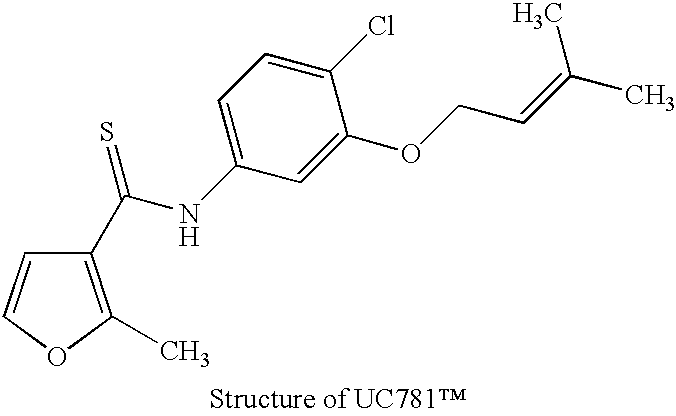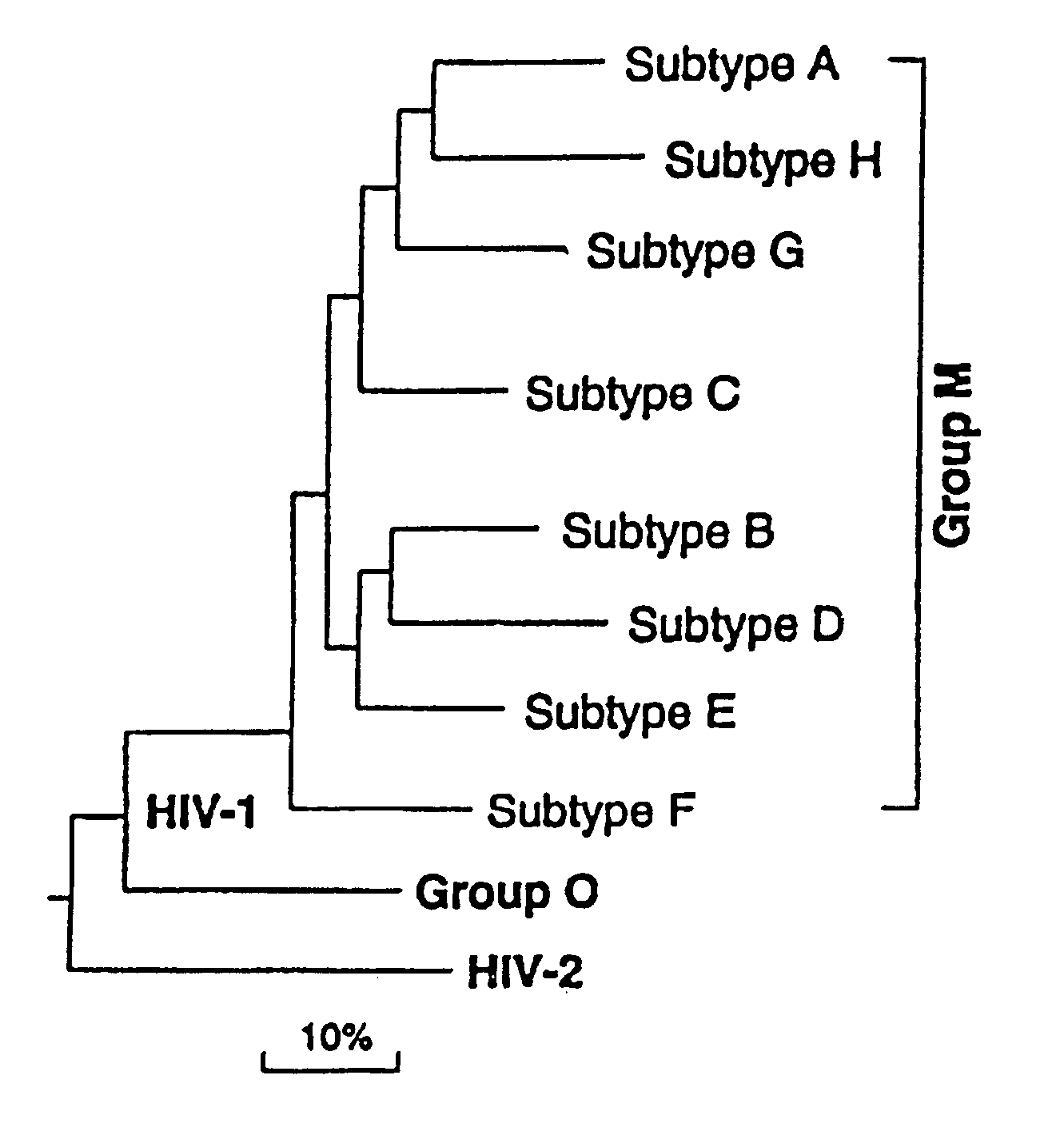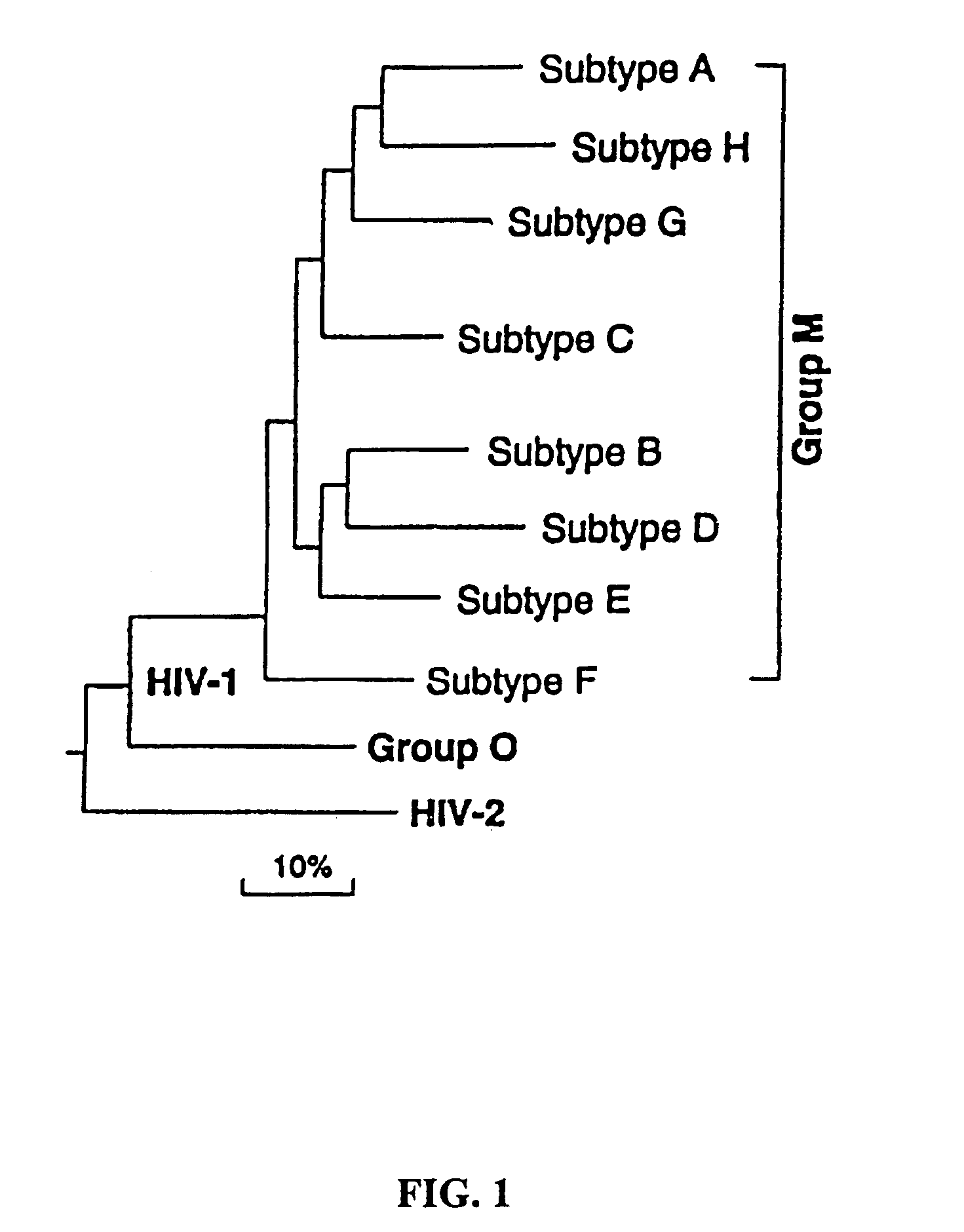Method for the development of an HIV vaccine
- Summary
- Abstract
- Description
- Claims
- Application Information
AI Technical Summary
Benefits of technology
Problems solved by technology
Method used
Image
Examples
example 5
5.5 Example 5 Immunogen Preparation
The immunogenicity of whole, inactive HIV particles is well known in the art. In particular, U.S. Pat. No. 5,849,475 discloses effective immunogenicity of intact, inactive HIV virus particles, and is incorporated herein by reference.
Inactive viral particles produced as described above in sections 5.2.1 and 5.2.2 are tested for inactivity by the methods of section 5.2.2. The inactivated viral particles are concentrated and purified by standard procedures involving pelleting and sucrose gradient centrifugaion. The concentrated, purified virus is diluted to about 200 .mu.g / ml in saline. This aqueous phase may be added to an oil phase containing 9 parts mineral oil (Drakeol-6) and 1 part Arlacel A (mannide monooleate). This mixture is stored in a volume sufficient to provide for an equal volume of air and shaken on a Spex Model 8000 Mixermill to form a stable emulsion. Such an emulsion is expected to form after about 10 minutes of shaking and may be st...
PUM
| Property | Measurement | Unit |
|---|---|---|
| Composition | aaaaa | aaaaa |
| Pharmaceutically acceptable | aaaaa | aaaaa |
Abstract
Description
Claims
Application Information
 Login to View More
Login to View More - R&D
- Intellectual Property
- Life Sciences
- Materials
- Tech Scout
- Unparalleled Data Quality
- Higher Quality Content
- 60% Fewer Hallucinations
Browse by: Latest US Patents, China's latest patents, Technical Efficacy Thesaurus, Application Domain, Technology Topic, Popular Technical Reports.
© 2025 PatSnap. All rights reserved.Legal|Privacy policy|Modern Slavery Act Transparency Statement|Sitemap|About US| Contact US: help@patsnap.com



